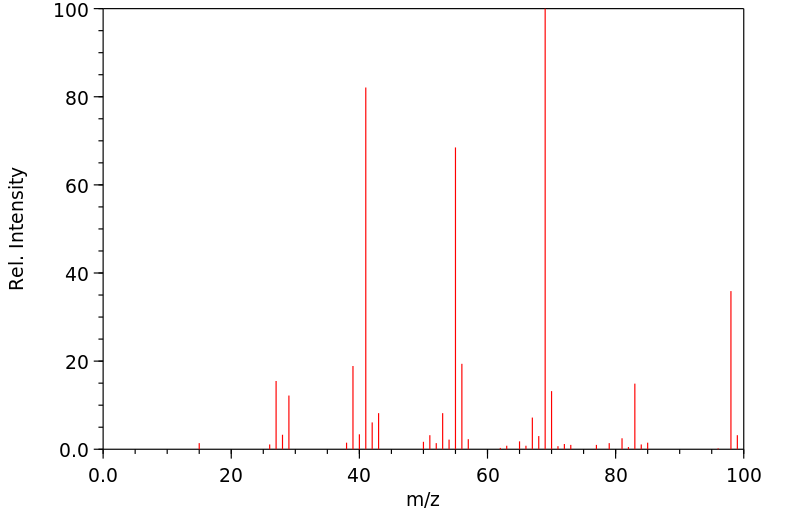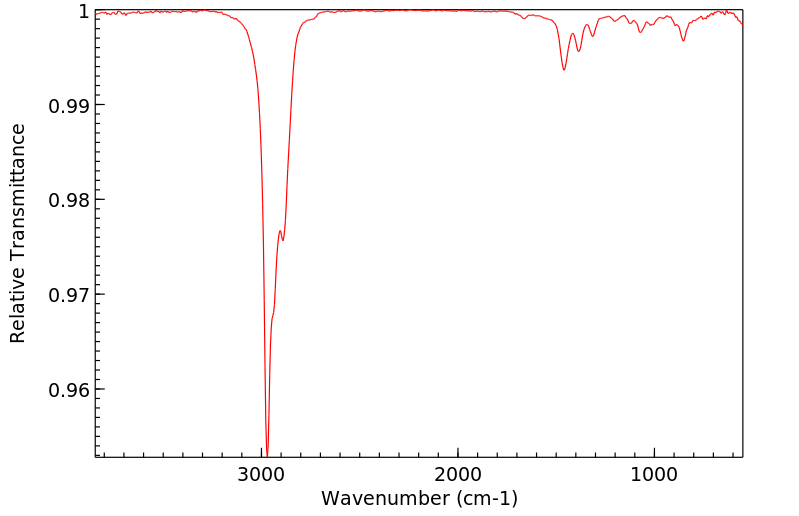3-methylhex-3-ene | 3404-65-7
中文名称
——
中文别名
——
英文名称
3-methylhex-3-ene
英文别名
3-methyl-3-hexene;3-Methyl-hex-3-en;3-Methyl-3-hexen;3-Methyl-hex-3-ene
CAS
3404-65-7
化学式
C7H14
mdl
——
分子量
98.1882
InChiKey
FHHSSXNRVNXTBG-UHFFFAOYSA-N
BEILSTEIN
——
EINECS
——
-
物化性质
-
计算性质
-
ADMET
-
安全信息
-
SDS
-
制备方法与用途
-
上下游信息
-
文献信息
-
表征谱图
-
同类化合物
-
相关功能分类
-
相关结构分类
物化性质
-
沸点:112.5 °C
-
密度:0.714±0.06 g/cm3(Predicted)
计算性质
-
辛醇/水分配系数(LogP):3.2
-
重原子数:7
-
可旋转键数:2
-
环数:0.0
-
sp3杂化的碳原子比例:0.71
-
拓扑面积:0
-
氢给体数:0
-
氢受体数:0
安全信息
-
海关编码:2901299090
SDS
反应信息
-
作为反应物:描述:参考文献:名称:Edgar; Calingaert; Marker, Journal of the American Chemical Society, 1929, vol. 51, p. 1487摘要:DOI:
-
作为产物:描述:参考文献:名称:Edgar; Calingaert; Marker, Journal of the American Chemical Society, 1929, vol. 51, p. 1487摘要:DOI:
文献信息
-
Superelectrophilic Fe(III)–Ion Pairs as Stronger Lewis Acid Catalysts for (<i>E</i>)-Selective Intermolecular Carbonyl–Olefin Metathesis作者:Haley Albright、Hannah L. Vonesh、Corinna S. SchindlerDOI:10.1021/acs.orglett.0c00917日期:2020.4.17intermolecular carbonyl–olefin metathesis reaction is described that relies on superelectrophilic Fe(III)-based ion pairs as stronger Lewis acid catalysts. This new catalytic system enables selective access to (E)-olefins as carbonyl–olefin metathesis products. Mechanistic investigations suggest the regioselective formation and stereospecific fragmentation of intermediate oxetanes to be the origin of this
-
The sodium tail of Mercury作者:A. E. POTTER、R. M. KILLEN、T. H. MORGANDOI:10.1111/j.1945-5100.2002.tb00886.x日期:2002.9Mercury is difficult to observe because it is so close to the Sun. However, when the angle of the ecliptic is near maximum in the Northern Hemisphere, and Mercury is near its greatest eastern elongation, it can be seen against the western sky for about a half hour after sunset. During these times, we were able to map sodium D2 emission streaming from the planet, forming a long comet-like tail. On May水星很难观测,因为它离太阳很近。然而,当黄道的角度在北半球接近最大值,并且水星接近其最大的东部伸长率时,在日落后大约半小时内可以在西方天空中看到它。在这段时间里,我们能够绘制出从行星流出的钠 D2 排放图,形成一条长长的彗星状尾巴。2001 年 5 月 26 日(UT),我们绘制了下游约 40,000 公里距离的尾部。由于辐射压力加速,尾部的钠速度在 40,000 公里处增加到约 11 公里/秒。2000 年 6 月 5 日(UT),我们在下游约 17,500 公里的距离绘制了尾部的横截面范围。在这个距离上,发射的半功率全宽约为 20,000 公里。我们估计尾部钠的横向速度范围为 2 至 4 公里/秒。我们观察到的速度意味着来自行星表面的源速度为 5 公里/秒或 4 eV。粒子溅射可能是在这些速度下生产钠原子的候选方法。尾部钠的总通量约为 1 x 1023 个原子/秒,相当于地球上钠的估计总生产率的
-
Mechanism, regiochemistry, and stereochemistry of the insertion reaction of alkynes with methyl(2,4-pentanedionato)(triphenylphosphine)nickel. A cis insertion that leads to trans kinetic products作者:John M. Huggins、Robert G. BergmanDOI:10.1021/ja00401a016日期:1981.6
-
Montagne, Annales de Chimie (Cachan, France), 1930, vol. <10>13, p. 62,69,97,129作者:MontagneDOI:——日期:——
-
Sokolow, Journal fur praktische Chemie (Leipzig 1954), 1889, vol. <2>39, p. 432作者:SokolowDOI:——日期:——
表征谱图
-
氢谱1HNMR
-
质谱MS
-
碳谱13CNMR
-
红外IR
-
拉曼Raman
-
峰位数据
-
峰位匹配
-
表征信息
同类化合物
高密聚乙烯
香叶醇
顺式3-甲基-2-己烯
顺式-5-癸烯
顺式-5-甲基-2-己烯
顺式-5-庚烯-1-炔
顺式-4-癸烷
顺式-4-甲基-2-戊烯
顺式-4-甲基-2-戊烯
顺式-3-癸烯
顺式-3-甲基-3-己烯
顺式-3-甲基-2-庚烯
顺式-3-戊烯-1-炔
顺式-3,4-二甲基-3-己烯
顺式-3,4-二甲基-2-戊烯
顺式-3,4-二甲基-2-戊烯
顺式-2-甲基-3-己烯
顺式-2-壬烯
顺式-2-丁烯-D1
顺式-1.1.1-三甲基-2-丁烯
顺式-1-甲基-2-环丙基乙烯
顺式-1-甲基-2-乙烯基环戊烷
顺式-1-环戊基-1-辛烯
顺式-1-氘代-3-甲基-1-丁烯
顺式-(9ci)-2,3,3a,7a-四氢-4-(1-甲基乙基)-1H-茚
顺式-(2-丁烯基)环丙烷
顺式,顺式-2,4-己二烯
顺-环辛烯
顺-9-二十一碳烯
顺-6-十三碳烯
顺-5-甲基-1,3,6-庚三烯
顺-4-辛烯
顺-4-壬烯
顺-3-辛烯
顺-3-甲基-2-戊烯
顺-3-壬烯
顺-3-十三碳烯
顺-2-辛烯
顺-2-癸烯
顺-2-戊烯
顺-2-庚烯
顺-2-己烯
顺-2-丁烯
顺-2,2-二甲基-3-己烯
顺-1,3-戊二烯
顺,顺-1,9-环十六烷二烯
顺,顺,顺-环癸-1,3,5-三烯
间戊二烯
间二(4-吡啶基)苯
镁,二-2-丁烯基-








